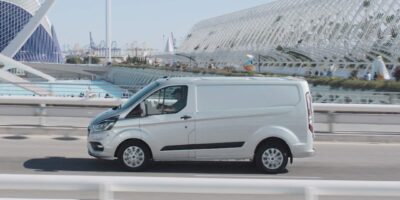Last week’s spring statement from the Chancellor confirmed the Government would be opening a new consultation on reducing van VED (Vehicle Excise Duty) rates for the cleanest models. The BVRLA have confirmed with the Treasury that the Government will focus on CO2 emissions and all changes will be applied prospectively, not retrospectively. The consultation will be seeking views on developing a first-year band similar to cars.
Clean Air Zones
Firstly, it’s great to hear it won’t be retrospective. Businesses are already under enough margin pressure. In a similar vein a retrospective strategy would lead to RV’s on the highest emitting examples to come under pressure. And the 4×4 lifestyle pick-up sector is likely to bear the brunt of that VED review; bear in mind the growth in that sector over recent years. That said, purely on a revenue generating perspective – I don’t believe it needs to apply retrospectively. That’s because TfL (Transport for London) will be charging all pre-Euro 6 vans and trucks a daily fee (£12.50 and £100 respectively) to travel into the new 2019 ULEZ zone (the Ultra-Low Emission Zone). As these zones expand the number of daily fees will increase, ultimately only declining as operators move into Euro 6 commercial vehicles.
The Costs
So a Euro 5 van will pay £62.50 for a 5 day week, plus the daily Congestion Charge Zone fee (which itself has moved to 24/7/365 with no out of hours or weekend grace periods). Trucks would pay £500 for the same 5 days operating in the ULEZ. So whilst this first year band fee will effectively penalise the worst CO2 offenders it should be remembered that a CV is a tool to do a job; the polar opposite of a car driver looking to save running costs or BIK by downsizing to a smaller, lower CO2 and more fuel efficient vehicle. So whilst there is an ongoing cost of ownership piece for the second (and subsequent) van owner, large corporate fleets operating over many urban areas will move to Euro 6 regardless of the first year RFL CO2 tax – the daily fine would be far higher for these operators to bear.
Transport for London have published estimates that the launch of a ULEZ in 2019 would see 56,000 daily van journeys attract the £12.50 fine. Annualised in 2019, that is over 20.4 million journeys and a revenue of £255 million. Simply staggering.
And then, by the end of 2020, the London ULEZ for CVs will have expanded to Greater London and Leeds, Nottingham, Birmingham, Derby and Southampton have to have Clean Air Zones implemented. In some of these cities it is still not clear whether vans will be included or if it is just truck and bus. That said whilst diesel Euro 6 is the standard, petrol ‘escapes’ with being Euro 4. That’s an interesting loophole but sadly used petrol vans are few and far between.
Just two weeks ago 33 local authorities, councils and boroughs were ruled on by the High Court to deliver “urgent and additional†measures to address air quality. Oxford is proposing to launch its zero emission roll out next year in specific streets and vehicles, completing it citywide by 2035. That’s the first initiative of its type in the world. And all this is really not that far away in terms of vehicle life cycles and lead times.
What does the future hold?
And then let’s overlay the next focus; just type ‘Euro 7’ into Google and you’ll not find much. The EU’s new focus from April 2020 will be derived from CO2 figures under the Worldwide harmonised Light vehicle Test Procedure (WLTP). Industry experts have suggested that on a car-by car basis, CO2 emissions could increase by 20% when compared with those obtained under the previous New European Driving Cycle (NEDC) regime. In terms of the UK market this will impact benefit-in-kind tax and Vehicle Excise Duty. WLTP For vans will roll out later, but there are still many unanswered questions.
Will CO2 be measured at maximum payload and gross vehicle weight? CO2 output is sensitive to unladen weight. What happens when the vans go through a multi-supplier build process and conversion? Whilst WLTP will not be retrospective, what happens to second life conversions on WLTP chassis cabs and panel vans? Will the canny trader be able to buy a used box van and convert it to a dropside or a tipper as today? And then there is the roadside checking element from the DVSA and the MOT test. How are OEM vehicle builds going to be recorded for onward reference by DVSA?
With respect to vans, Euro 6 was a legal requirement from January 2016. So, whilst some manufacturers went to market earlier than this deadline, next year – when the London ULEZ launches, the pool of potential used Euro 6 vans will mainly be sub 3 years old. With Manheim’s average age of vans sold in 2017 being just over 5 years of age, I predict a perfect storm for used Euro 6 vans and trucks over the coming years where demand will outstrip supply.








